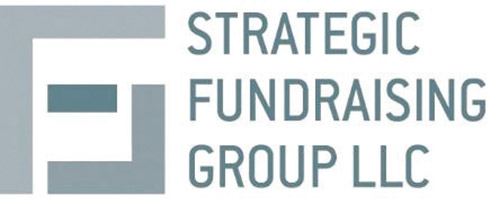
It is believed that golf was invented in the 15th century as a game played on the eastern coast of Scotland. This is in an area close to the royal capital of Edinburgh. In those days, players would attempt to hit a pebble over dunes and around tracks using a bent stick or club. We have come a long way since the age of the Flintstones.
Golf was popularized through tournaments and became a well-established spectator sport in the United States by the 1920s and gained popularity ever since. It wasn’t long before nonprofits jumped onto the bandwagon and it is said that they now raise $4 billion yearly. The Ohio Golf Journal claimed that “Every year more than 12 million participants take part in 143,000 golf events at over 12,700 courses in the United States, and on average each event raises $26,400.”
Summer is the ideal time to hold a golf tournament since country clubs open up their fairways to nonprofits on Mondays, and sometimes on Thursdays. Remember this: True golfers are by and large very dedicated to the sport. I once witnessed golfers playing in the snow in Fairfield, Connecticut using white balls, no less. It doesn’t get nuttier than that, does it?
Let me illustrate golfer fervor with a funny story.
One day, Joe and Jack are out golfing when Joe slices his ball deep into a wooded gully. He grabs his 7-iron and proceeds down the embankment into the ravine in search of his ball. The brush is quite thick, but Joe won’t give up. Suddenly, he spots a shiny object. As he draws closer, he realizes that the shiny item is a 7-iron in the hands of a skeleton lying near an old golf ball. Joe breathlessly calls out to his golfing buddy: “Hey Jack, come here. I’ve got some real trouble down here.” Jack runs over to the edge of the gully and yells out: “What’s the matter, Joe? Is everything OK?” Joe hollers back in a nervous voice. “Throw me my 8-iron; you can’t get out of here with a 7.” (LOL).
At some not-for-profit organizations, I was privileged to coordinate tourneys at the most picturesque and challenging courses throughout New York State, Florida and California. These activities were lucrative and raised hundreds of thousands of dollars. They also were an excellent way to enlist new leadership for our nonprofit. In time, more and more community charities joined in. As such, it became increasingly difficult to recruit from a limited supply of players since many supporters attended multiple golf tournaments hosted by our counterparts.
There are many compelling reasons why people choose to play in these competitions, and you should expect similar reasoning to hold for your nonprofit. As a professional, it is essential to understand them if you are hoping to enroll players in your cause. A few years ago, the African American Golfer’s Digest cited some enticements including:
1. Being asked or pressured by a peer, friend or well-connected committee.
2. Outstanding reputation of the course.
3. Swag bag full of goodies and superior prizes.
4. It’s a worthwhile charity (sorry, not No. 1).
5. Quality tournament production values.
Preparing for golf fundraisers is no different than planning for and implementing a gala. Nevertheless, there are key considerations to making it a financial success. Working with a checklist of tasks helps the fundraiser succeed. A worksheet with assignments might include, but not be limited to, the following:
a. Meet in advance with course officials to confirm plans.
b. Establish sponsorship options and player couvert.
c. Set up for registration and bag tagging.
d. Identify the location for all activities.
e. Plan giveaways, marketing opportunities.
f. Coordinate food arrangements—outside and inside.
g. Organize contests that generate more revenue such as the Longest Drive; Closest to Pin; Closest to the Line; Hole-in-One
h. Agree on play format: scramble or best ball.
i. Choose foursome and individual prizes that may be exchanged for Pro Shop gift certificates.
j. Make plans for a refreshment cart on the course.
k. Formulate tournament awards dinner and program details
l. Decide on caddies: cost and gratuities
m. Send confirming notes to all players and directions to the club.
n. Consider insurance requirements.
o. Provide cash for miscellaneous needs.
p. Confirm locker room readiness and attendants.
From the above list, awarding quality prizes is one of the most important responsibilities. This was a lesson I had to learn the hard way at my first golf
tournament over 30 years ago. To attract first-rate sponsors and a field of 144 players (later even needing two courses), the rewards have to be high-caliber. Not knowing then the significance of quality prizes, I decided to just award trophies to the winners. Needless to say, that didn’t go over well. Afterward, we gave all participants greatly coveted golf clubs, exclusive golf shoes and premium jackets. Once word spread, we became a popular event to attend.
The enormous amount of charitable dollars raised through golf is extraordinary. If you plan an event, “may the fores be with you!”
Norman B. Gildin is the author of the recently released book on nonprofit fundraising “Learn From My Experiences.” He is the president of Strategic Fundraising Group, whose singular mission is to assist nonprofits to raise critical funds for their organization. His website is www.normangildin.com.













